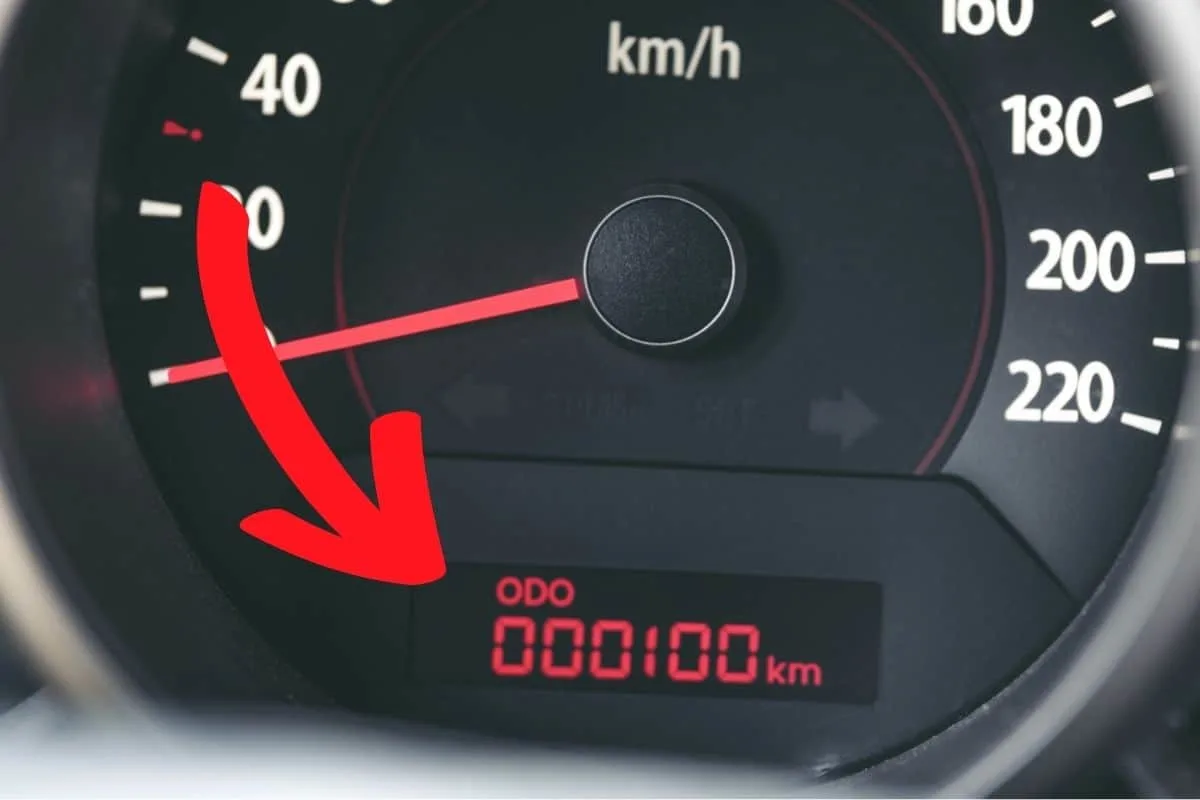You slowly pull open the door to your new car and see the pristine interior waiting for you. You gently settle in and take in that new car smell that we all love. Suddenly, you spot something that’s off. You see that the speedometer already has some miles on it!
And that doesn’t seem right at all! You just bought this car, so why has it already been driven? Well, there is an explanation, and you might be able to save a few extra dollars as well, so don’t go arguing with the dealership just yet!
New cars come with some miles on them because they are driven around dealership loading areas, taken on test drives, and potentially driven between dealerships. That being said, there is a certain limit as to what can be an acceptable number of miles on a speedometer of a “brand-new” car.
However, in some cases, you can use this to your advantage! Some specific situations allow you to ask for a discount on your car, and why wouldn’t you save a few extra dollars when you’re making such an important decision?
Here I’ve made a list of possible reasons why your car has a few miles on it, and when you can ask for a discount.
Reasons Why Brand New Cars Have Some Mileage
Every car has a few miles on them, and even brand-new cars might have a minimum of a few miles on them. This is because the car needs to be driven to different locations before it arrives at your doorstep.
The car was driven a bit in the factory and during inspection and maintenance checks while it was under the final stages of construction. Vehicles imported via ships need to be loaded, unloaded, and driven to the dealership from the port. the car may also be driven around the dealership in order to make space for other cars.
If you’re getting a “new” car from used car dealerships that deal in Japanese automobiles, then they may already have a higher odometer reading, since they’ve been driven around by a first owner.
Let’s take a look at the other reasons why your new car may have miles on it!
1. You’re buying a “demo” car
Demo cars are the models parked in the dealership and are used to give potential buyers a test drive of the car before they decide whether they want the car.
You can expect these cars to have around 50-100 miles on them, but that’s not a cause for concern. In some cases, it is considered good that the car has been driven a bit since that allows the dealer to check for any pre-existing malfunctions and send the car back to the manufacturer.
Since demo cars have been used as test-drive vehicles, you can haggle a bit on the price if you’re getting one. The dealership might agree since they’d want to let go of a car that has been very slightly driven.
This way, they can requisition a newer model from the manufacturer, and you’ll end up saving some money!
2. You asked for extra upgrades on the car
If you asked for the car to be loaded with the latest features, your car might have a higher meter reading than other models with lesser features.
The reason behind this is since your car is customized with different upgrades, it may be driven to different parts of the factory to be fitted with the upgraded features.
Get a base model if you absolutely want a car with the lowest possible mileage and don’t care for the added features. It will surely have a lower meter reading than a car that has been fully upgraded and kitted out.
3. You had the car delivered to your address
If you opted for the delivery at home option, it will obviously have some miles on it since it was driven from the dealership to your home. The number depends on how far the dealership is from your home.
Though a good piece of advice would be to drive the car home yourself. This is because letting a sales representative drive the car to your home is always riskier than driving it yourself.
The car might get a few scratches, and you wouldn’t find out until a few days later.

How many miles should a new car have?
If you’re getting a brand-new car that has upwards of 200 miles on the speedometer, you have the right to refuse it.
New cars should have a maximum of 10 – 20 miles if they’re not a “demo” unit, and demo units should have a maximum of 100 – 150 miles on them to be considered a good deal.
If you’re looking to get some more value out of the deal, then definitely ask for benefits if you’re getting a car that has more than or equal to 200 miles. You can get a discount on the price, plus other benefits.
These can include a manufacturer’s warranty or an upgrade or two at the dealership’s expense.
What is a zero-mileage car?
Zero mileage cars are sold via dealerships and are delivered to you at your address. These are different from used and new cars since used cars have been driven around by previous owners and have lots of miles on them.
New cars have a small bit of mileage on them since they’ve been driven around for the reasons mentioned above. But zero mileage cars are owned by the dealership, and there is a transfer in ownership from the dealership to you.
Should I still consider mileage if I’m buying a used car?
Although mileage is one of the most important factors when buying a used car, you need to consider several other factors as well.
The condition of the car, the driving habits of the previous owner, the country it’s been driven in, are all important factors.
For example, a close friend of mine bought a Japanese car that had over 30,000 miles on it. But the car ran like new since the previous owner kept extremely good care of it.
Conclusion
Always rely on trusted dealerships when you’re buying a new or used car.
Remember that any car will have at least a few miles on it, and even 30-50 miles is still generally considered to be acceptable.
But if the car has more miles than these, that’s cause for concern, and either you should ask for another model of the car, or ask for a discount.
We hope this guide was helpful, and that you make a well-informed purchase!
